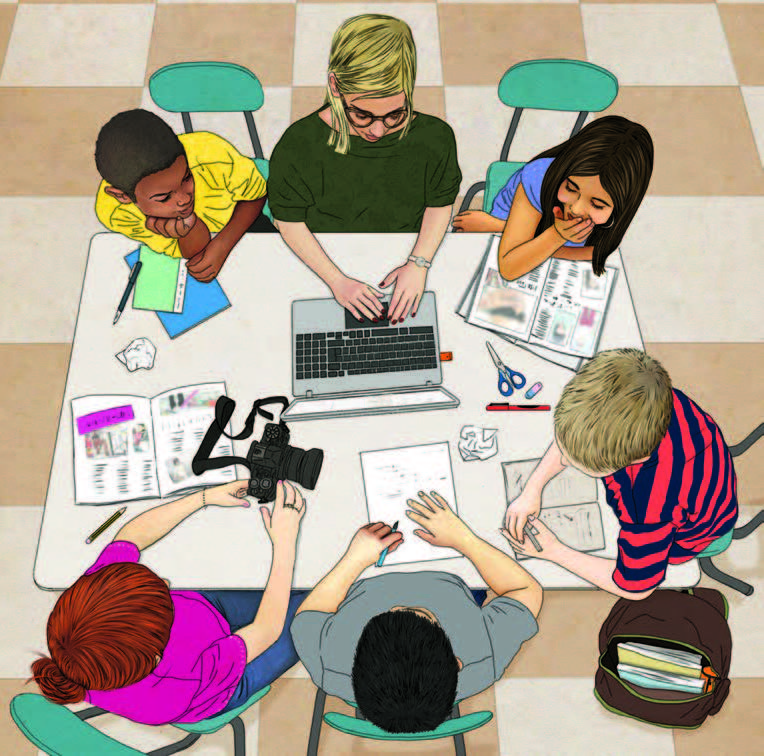Share this page
Illustration: Kimi Kimoke/Colagene

Want to encourage reading, writing and discussion in French? Launch an online magazine! Recruit a dedicated editorial team to work on this digital publication either in class or as an extracurricular activity. During meetings, they will set the theme, content and deadlines for each issue; then watch the research and critical thinking begin. My Grade 7–12 contributors quickly learned the importance of reliable sources, not to mention how to cite them to avoid plagiarism. The group also developed their design, art and computer skills as they worked cover concepts and determined ways to draw readers in through the layout. Curious about the final product? Have a look at our French magazine, La Griffe (oct-oeeo.ca/LaGriffe), for a dose of inspiration.
— Najwa Daou, OCT
Conseil scolaire catholique MonAvenir
➞ Have a classroom idea to share? Send it to us at ps@oct.ca and your advice could be published in an upcoming issue! Check out our Professional Practice Research archive at oct-oeeo.ca/1QAwOIQ.
By Stefan Dubowski
See student interest in Science, Technology, Engineering and Math (STEM) soar with a little help from Let’s Talk Science. The award-winning Canadian charitable organization has a stack of free classroom activities, planning tools and other resources (oct-oeeo.ca/letstalkscience) aligned with the Ontario curriculum, available in both English and French.
If you teach kindergarten to Grade 3, visit the IdeaPark section for inquiries, investigations and design/build activities that link STEM with other important skills such as numeracy, literacy and social development. Each activity comes with questions for teachers to use, words for students to learn and opportunities for them to assess inquiry-based exercises from all angles.
Looking for something a bit more outlandish? Enrol in the annual Tomatosphere project. You and your students will receive tomato seeds that may — or may not — have been exposed to the kinds of conditions you’d find in outer space. Grow the seeds, record your observations and submit them for analysis to find out whether your tomatoes are homemade or spaced out.
Grade 8 to 12 teachers will want to take a trip to CurioCity, where you’ll be able to connect with STEM experts for live-streamed Q&A sessions, helping students make the link between in-class science and real-world STEM careers.
Sign up for a Let’s Talk Science Outreach to have a post-secondary or industry volunteer visit your class and lead students through a STEM-focused activity. Topics include friction, energy and forces for kindergarten, an exploration of the human skeletal system for Grades 3 to 5 and an investigation of unmanned space probes for Grades 6 and 9.
A Let’s Talk Science survey found 92 per cent of students believe studying STEM will lead to good jobs, but just 25 per cent are interested in pursuing STEM careers. That is a significant disconnect that needs to be addressed. If you agree, look to these free resources to begin bridging that gap.